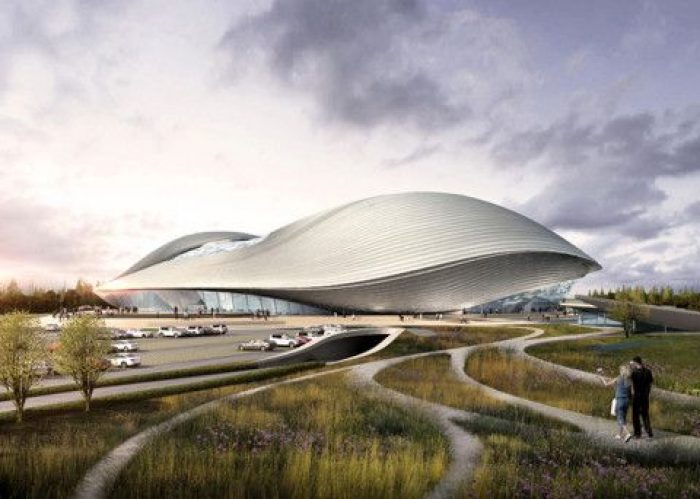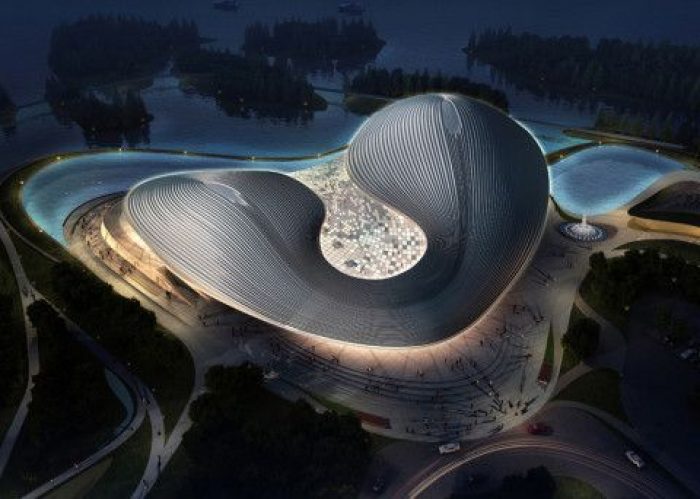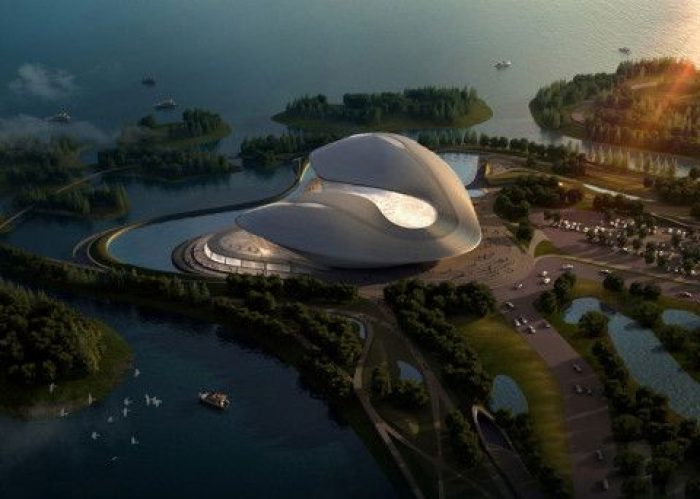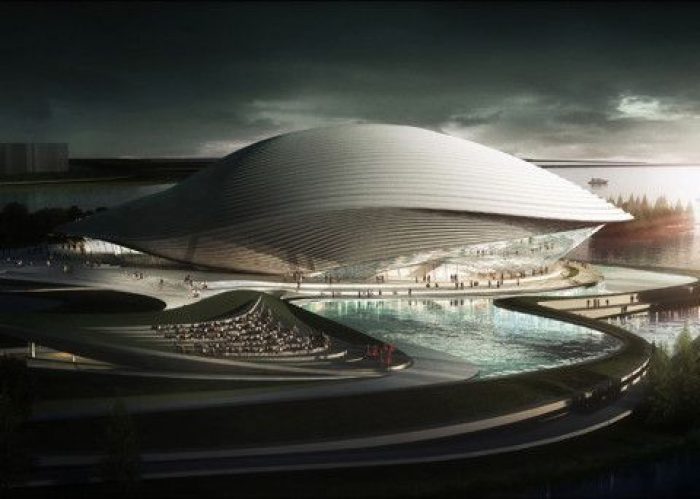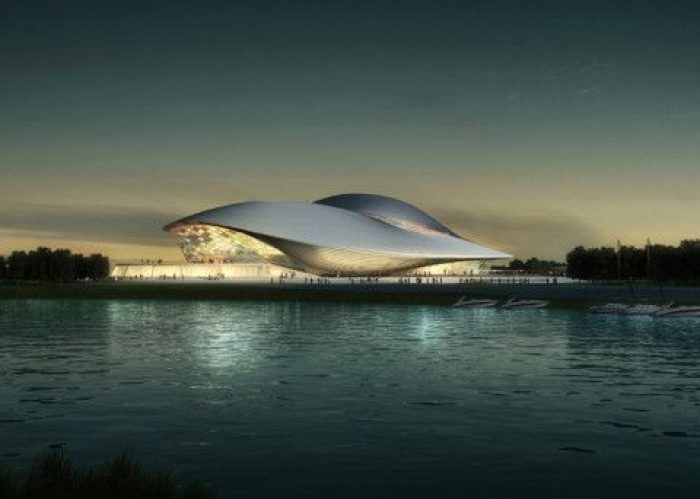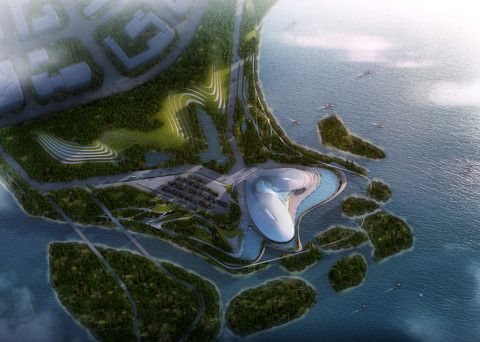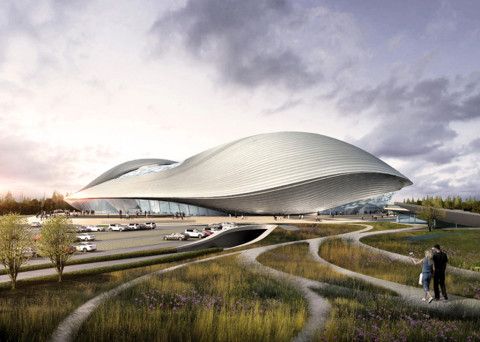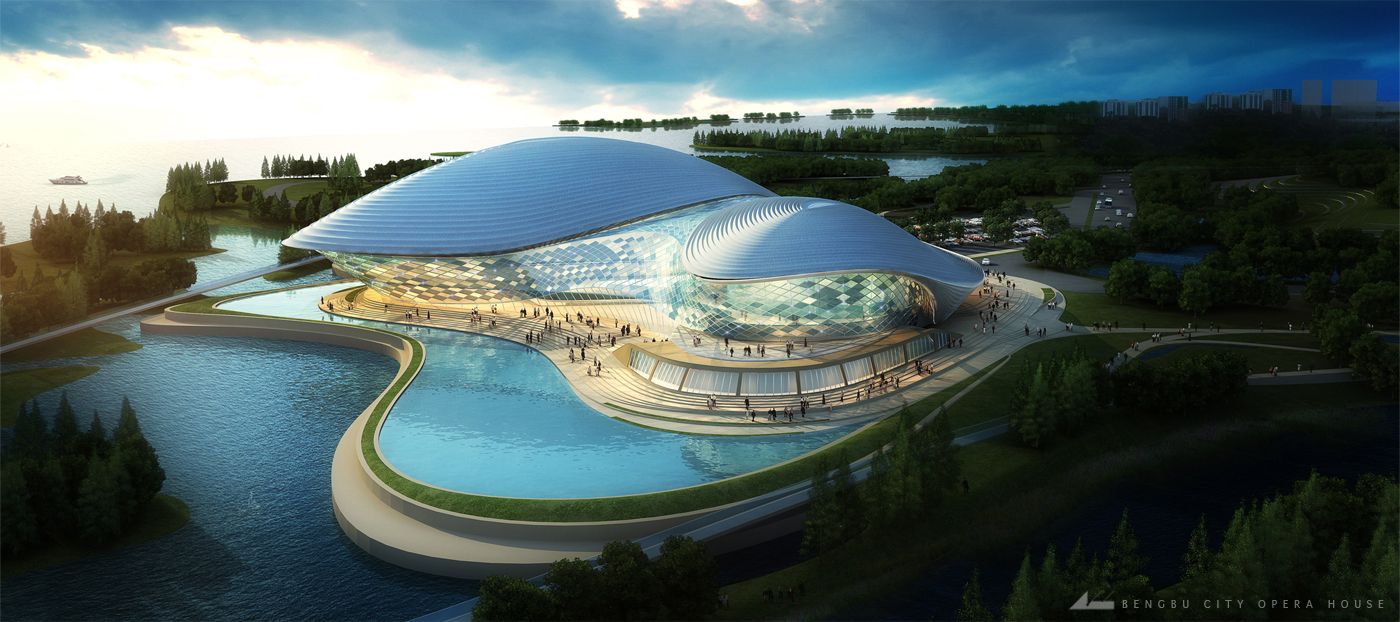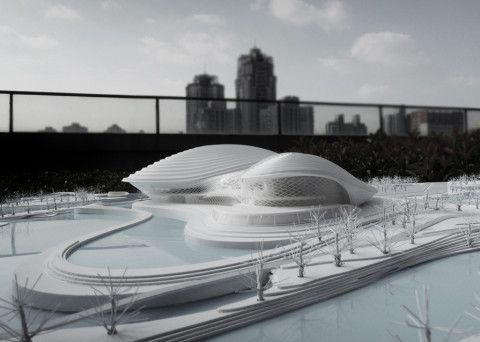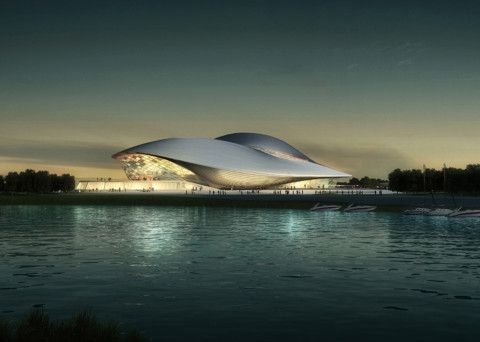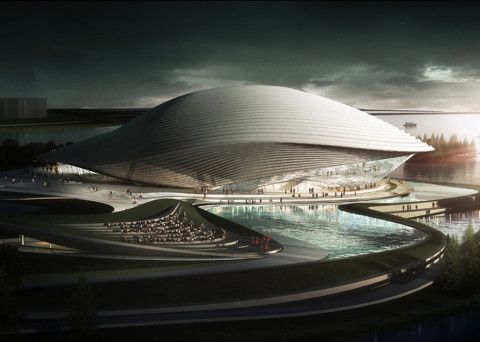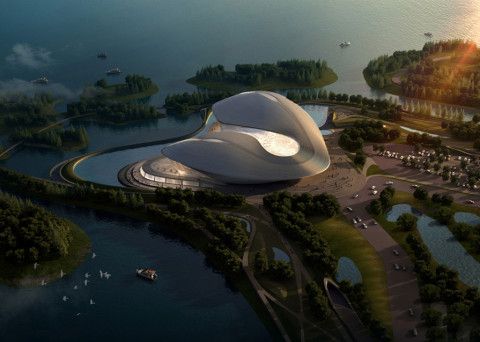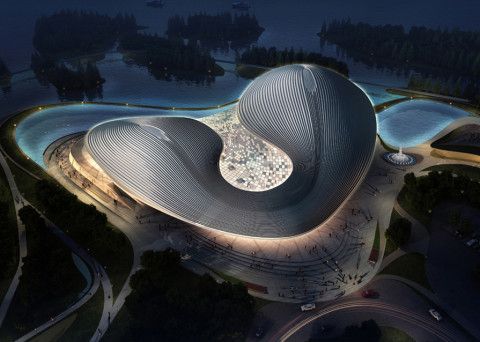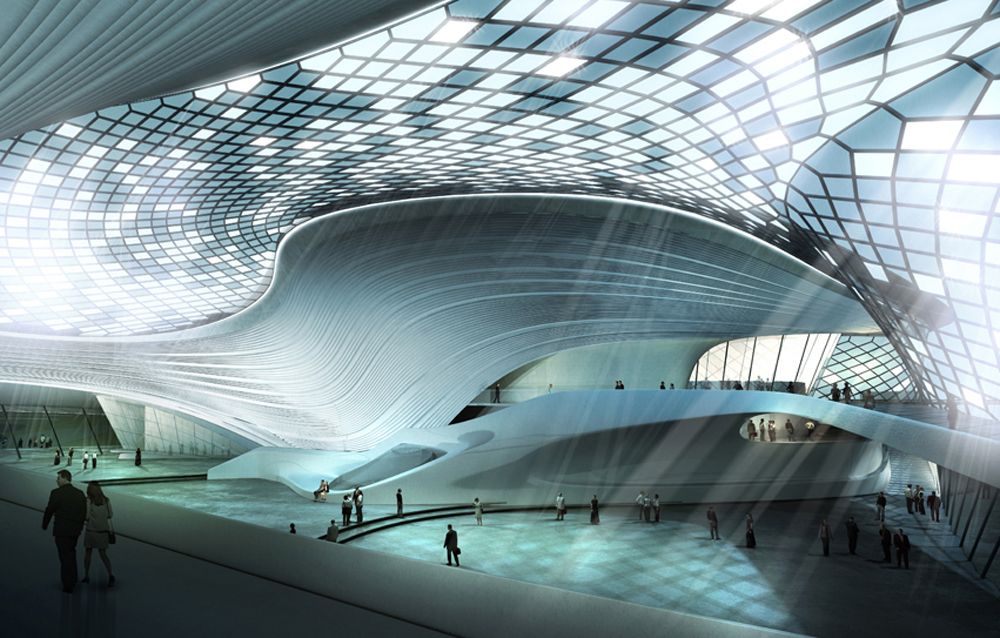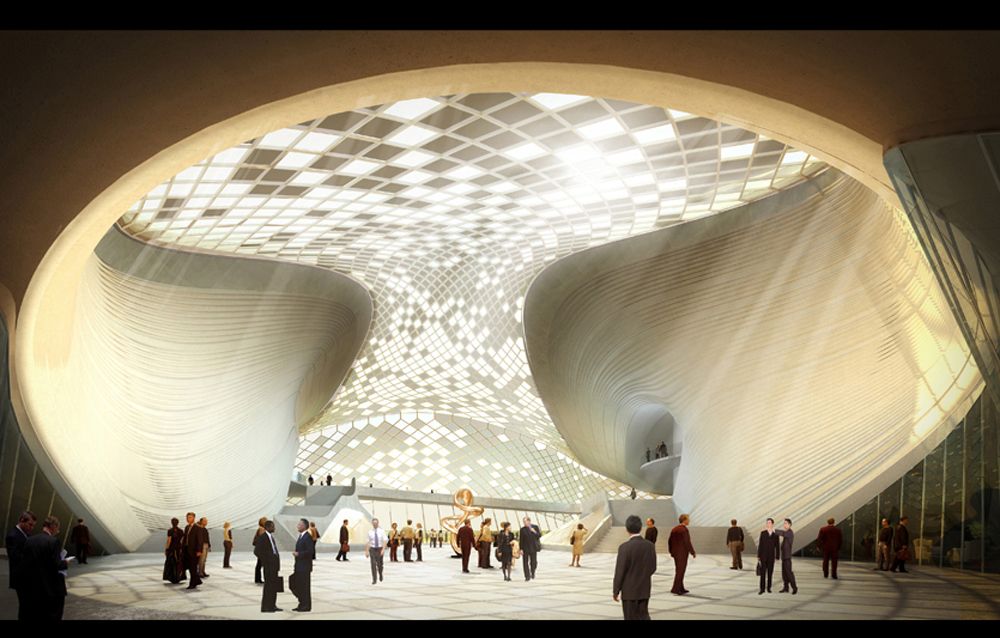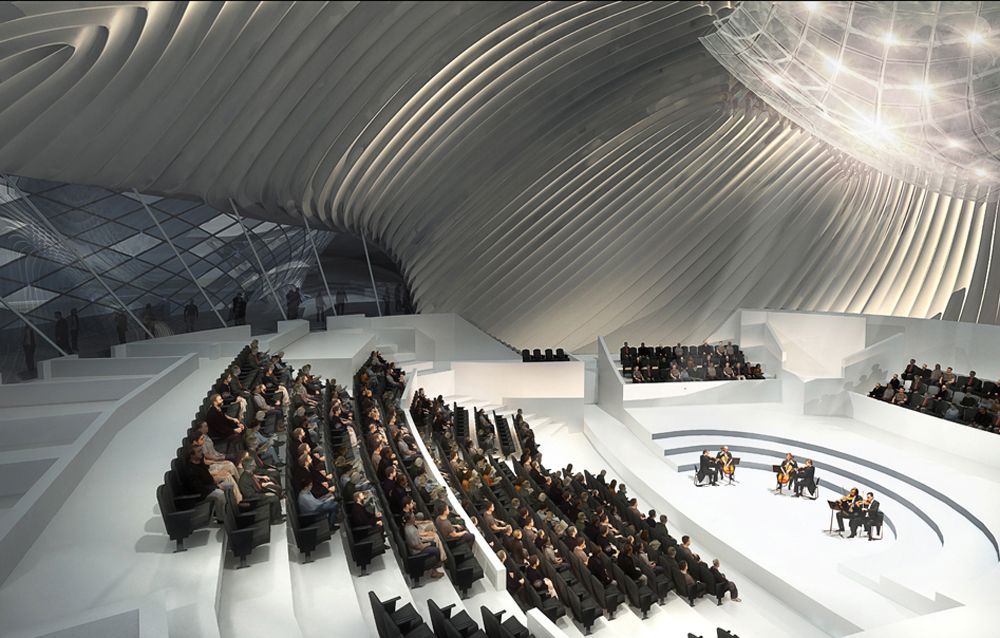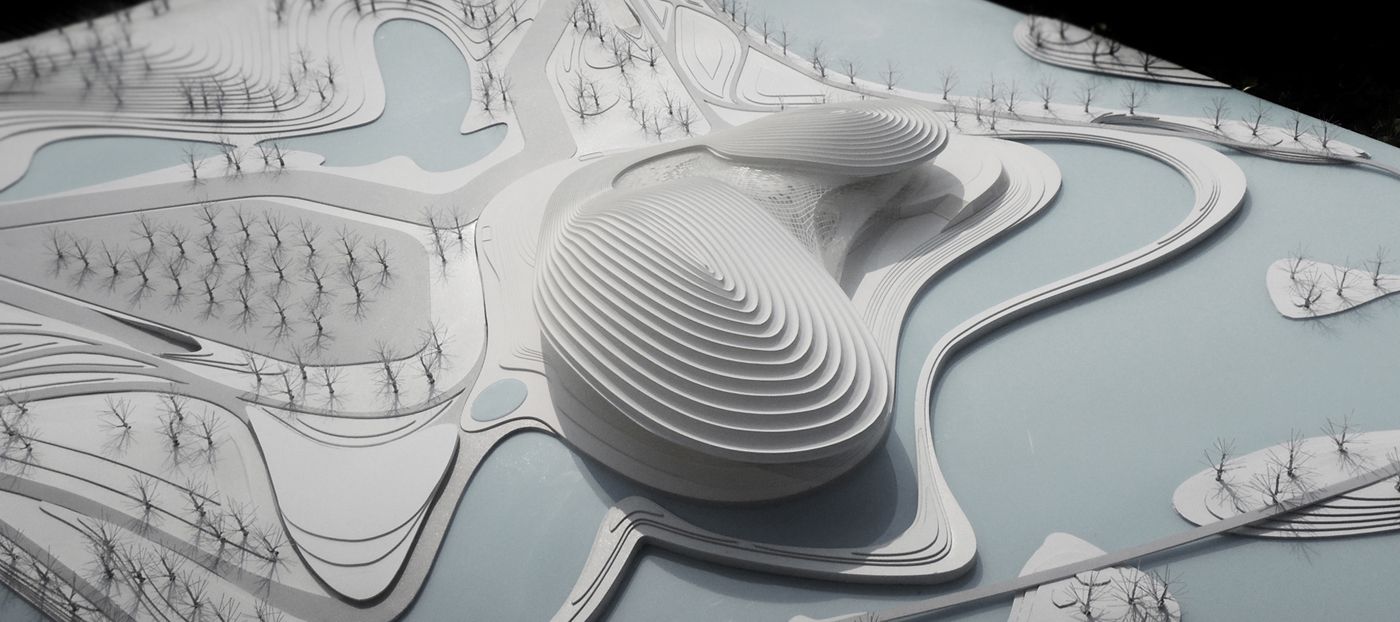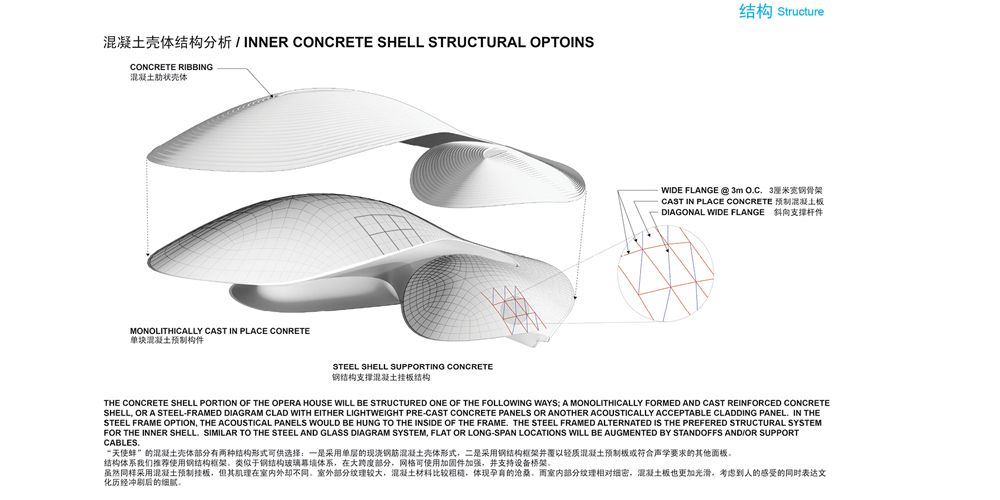The new Bengbu Opera House and Music Hall complex sits along a newly developed coastline and public park integrating existing and natural landscape with a new sphere of public space and iconography. The new cultural gem of the coastline will attract and shift new life and commerce into and through the new Bengbu city. The building is nestled between beautiful public parks and sustainable natural landscapes; it will become a destination not only for patrons of the arts but tourists and the public alike. The iconic figure of the building recalls the city of Bengbu’s natural and symbolic beauty. The new Opera House and Music Hall will be an addition to the array of cultural nodes already existing within the cities context including Science Palace Square, Bengbu’s Cultural Plaza, Bengbu City Administrative Office Center, Long Lake Park, and Annhui University of Finance. The Opera House and Music Halls are embedded into the building like pearls of a clam; it is made up of layers. These layers echo the complexity of the site and its own make up (the people, the new city, the natural landscape, the beauty of the views) The entry/outer layer of the shell shines and glistens in the sun reflecting not only the water and the color of the landscape but also symbolically reflecting the colorful culture that exists and will exist in the city and within the newly developed cultural node.
The landscaping strategy divides the site into an iconic public park in front of the building and a more intimate micro-environment made up of islands behind the building. The islands and marshland negotiate the desires of man and nature. The man made boundary devolves and gives way to a more natural coastline. This allows the building to acts as a threshold between the city and the lake. The city grid transforms into a softer landscape, it opens up 180-degree views out to the lake. The traffic flow draws traffic from the north and guides it to the south of the site as it wrap around the public park in a grand loop. This lets all who enters experience the entire landscape and building design. There is also a pedestrian loop that connects the green axis of the master plan to the south and the developing coastline to the north. One of the most important views of the building is from the highly trafficked Donghui Avenue Bridge. This view was designed to be the most iconic and symbolic. The entry is visible along with the two bulges in the form that house the pearls inside.
Upon entry of the building the outer shell or “visor” becomes apparent as it transforms over the two pearls within. Its reinforced gridshell structure and sustainably designed glazing not only reflects the symbolic nature of the buildings context but also responds sustainably to the environment through by allowing natural ventilation and solar reflection. The “visor” (A) is a lightweight structure consisting of a simple diagrid frame. The substructure reinforcement (C) consists of a series of strands, which were generated by the simulation of water drops dripping from the top of the frame. This abstract idea was then converted into a system, which finds the shortest rout from the top to the bottom of the skin, simulating the path in which the loads travel. The glass frames (B) are semi custom consisting of 4 different panel types with varying opacity and color to give the skin a glistening quality in the sunlight. From close the skin looks pixelated, but as you pull further back you begin to see color and gradients, which transform as the light changes.
Once inside, the circulation guides you through the grand lobby space where you experience the concept of the nested pearls inside the shell. As you move through the lobby you also experience the transition from exterior to interior through the glistening effect of the skin above you. As you continue through the space you encounter the main circulation stair and ramp whose purpose is to guide you through a bridge which bifurcates to the main mezzanines of each performance halls which face out towards the lake. The lobby and building becomes a threshold between the front and back of the building. The public amenities all are accessible and housed in the ground floor lobby space. The mezzanine level draws patrons up a grand staircase and into either one of the pearls, which are expressed in the surface of the roof as bulges. The building responds sustainably to its own environment by using the form to create a naturally ventilated space within the lobby.
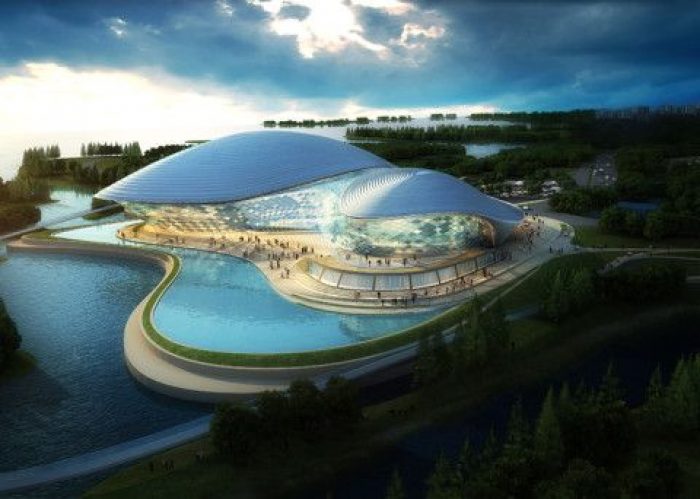 The music hall “pearl: is a 600 seat fully functioning music hall that takes advantage of 360 degree views of the stage for the audience. It uses internationally renowned and contemporary precedents such as Frank Gehry’s New World Symphony Hall in Miami USA. There is a full acoustical and structural separation between the performance halls and the rest of the program for the building to ensure highest quality function.
The music hall “pearl: is a 600 seat fully functioning music hall that takes advantage of 360 degree views of the stage for the audience. It uses internationally renowned and contemporary precedents such as Frank Gehry’s New World Symphony Hall in Miami USA. There is a full acoustical and structural separation between the performance halls and the rest of the program for the building to ensure highest quality function.
The structural system for the steel and glass exterior diagram of the Opera House is comprised of a welded assembly of rectangular tubes that maintain the architectural expression. A diagonal steel rod that helps minimize the diagrid member sizes, and provide system stability further stiffens the quadrilateral grid of steel tubes. The geometry of the grid curvature of the shell will be optimized to provide a support framework that minimizes curved glass and maximizes panel size repetition. At locations where the diagram system becomes flat or long span, standoffs and/or support cables will augment the grid.
The concrete shell portion of the Opera House will be structured one of the following ways; a monolithically formed and cast reinforced concrete shell, or a steel-framed diagram clad with either lightweight pre-cast concrete panels or another acoustically acceptable cladding panel. In the steel frame option the acoustical panels would be hung to the inside of the frame. The steel-framed alternate is the preferred structural system for the inner shell. Similar to the steel and glass diagram system, flat or standoffs and/or support cables will augment long-span locations.
Credits:
Project: Bengbu City Opera/Music Hall
Type: Invited International Competition
Location: Bengbu, China
Status: Ongoing – Competition Finalist
compMatter-TA Design Directors:
Luis Quinones
Jonathon Stahl
Dave Stamatis
Trahan Architects Team:
Trey Trahan [FAIA] – Principal in Charge
Leigh Breslau [AIA] – Theatrical Advisor
Support Team:
LDI – Tongji Architectural Design Institute
Structural – Thornton Tomasetti
MEP – Environmental Systems Design
Landscape – Tom Leader Studio
Physical Model – ARRK DISON
Renderings – OneView CGI
Courtesy Of compMatter-TA
Courtesy Of compMatter-TA
Courtesy Of compMatter-TA
Courtesy Of compMatter-TA
Courtesy Of compMatter-TA
Courtesy Of compMatter-TA
Courtesy Of compMatter-TA
Courtesy Of compMatter-TA
Courtesy Of compMatter-TA
Courtesy Of compMatter-TA
Courtesy Of compMatter-TA
Courtesy Of compMatter-TA
Model
Diagram


